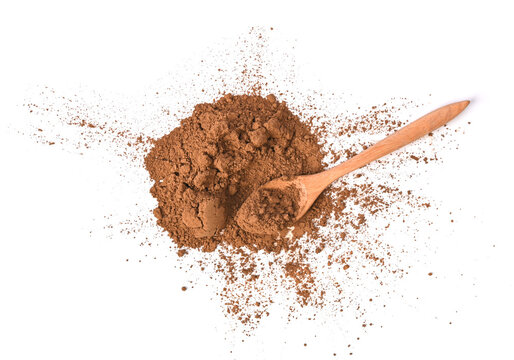Introduction
Hojicha and Matcha are two beloved Japanese teas, each with its unique characteristics and flavors. In this article, we will explore the fundamental differences between Hojicha and Matcha, helping you make an informed choice when you're sipping your next cup of Japanese green tea.

Hojicha - A Roasted Delight
Origin and History
Hojicha, a delightful roasted green tea, traces its roots back to Kyoto, Japan. It was first crafted in the 1920s and has since become a beloved tea for its earthy and toasty flavors.

The Roasting Process
Hojicha is made from Bancha or Sencha leaves that are roasted at high temperatures. This process gives the tea its reddish-brown color and imparts a unique smoky aroma.
Flavor and Aroma
Hojicha's flavor profile is characterized by its nutty, caramel-like notes, making it a soothing and comforting tea choice. Its aroma is reminiscent of a campfire, creating a warm and inviting experience.

Matcha - The Green Elixir
Origins
Matcha has a rich history that dates back to ancient China and was later adopted by Japan. It's made from shade-grown tea leaves, which are stone-ground into a fine, vibrant green powder.
Cultivation and Preparation
Matcha's unique cultivation method involves shading the tea plants for several weeks before harvest. The leaves are then ground into the distinctive powder that is used to make Matcha.

Taste
Matcha has a distinctive, rich, and slightly bitter taste with grassy undertones. It's known for its vibrant green color and a flavor that is both bold and invigorating.

Hojicha vs. Matcha - The Key Differences
When comparing Hojicha and Matcha, several key differences emerge.
Processing Methods
Hojicha is roasted, giving it a warm, earthy flavor, while Matcha is ground into a fine powder, resulting in a bright green infusion.
Flavor Profiles
Hojicha boasts a toasty, nutty taste with smoky undertones, while Matcha is known for its bold, slightly bitter flavor.
Caffeine Content
Hojicha has lower caffeine levels than Matcha, making it an excellent choice for those looking to reduce their caffeine intake.
Health Benefits
Both teas offer health benefits, but organic ceremonial matcha is higher in antioxidants, while Hojicha is easier on the stomach due to its lower caffeine content.

Culinary Uses
Both Hojicha and Matcha have found their way into the kitchen.
Cooking and Baking
Hojicha is often used to flavor ice creams, cookies, and even savory dishes. organic culinary matcha is popular in sweets, such as green tea lattes and matcha-flavored desserts.
Recipes and Dishes
Try your hand at making Hojicha-flavored brownies or Matcha lattes to explore the culinary possibilities of these teas.

Health Benefits
Both teas offer unique health advantages.
Hojicha's Benefits
Hojicha is known for its antioxidant properties and its ability to soothe digestion.
Matcha's Advantages
Matcha's high antioxidant levels make it a great choice for boosting metabolism and enhancing mental clarity.

Choosing Between Hojicha and Matcha
The choice between Hojicha and Matcha ultimately comes down to personal preference and the occasion.
-
If you prefer a bold, green, and slightly bitter taste, Matcha might be your choice.
-
If you seek a milder, toasty, and smoky flavor, Hojicha could be your cup of tea.
Conclusion
In conclusion, Hojicha and Matcha are both delightful Japanese teas, but they cater to different tastes and preferences. Whether you choose the comforting, roasty notes of Hojicha or the bold, vibrant taste of Matcha, you're in for a delightful tea experience.
FAQs
Is Matcha stronger than Hojicha in terms of caffeine content?
Generally, matcha green tea contains more caffeine than hojicha. Matcha is made from finely ground whole tea leaves, so when you drink it, you're consuming the entire leaf, leading to a higher caffeine content.
Hojicha, on the other hand, is a roasted green tea made from mature leaves and stems, resulting in lower caffeine levels compared to other green teas.
Can I use Hojicha and Matcha interchangeably in recipes?
While both hojicha and matcha offer unique flavors and characteristics, they can sometimes be used interchangeably in recipes depending on the desired taste profile.
Matcha has a more vibrant green color and a distinct grassy, slightly bitter taste, while hojicha has a roasted, nutty, and milder flavor. Experimentation might be needed to balance flavors if substituting one for the other.
Which tea is more suitable for weight loss – Hojicha or Matcha?
Both hojicha and matcha have certain properties that may contribute to weight loss, but there isn’t a definitive answer on which is more suitable.
Matcha is rich in antioxidants and has been associated with boosting metabolism and aiding in weight management. Hojicha, due to its lower caffeine content and potential to aid digestion, might also be beneficial in weight loss efforts. However, the impact on weight loss can vary for each individual.

Are there any specific health concerns related to consuming Matcha or Hojicha?
There are no major health concerns associated with consuming either hojicha or matcha when consumed in moderation. However, because matcha contains more caffeine, excessive consumption can lead to side effects like insomnia, jitteriness, or increased heart rate.
Additionally, some individuals might have sensitivities to caffeine or the compounds present in these teas. It's always wise to consume any tea in moderation.
Can I blend Hojicha and Matcha for a unique tea experience?
Absolutely! Blending hojicha and matcha can create a unique tea experience that combines the nutty, roasted flavors of hojicha with the vibrant, grassy notes of matcha. Experimenting with different ratios can help you find a blend that suits your taste preferences.


